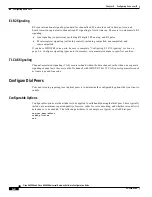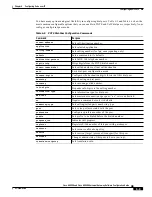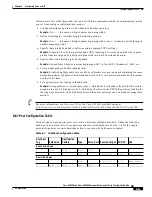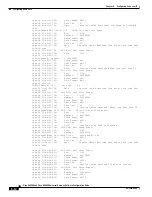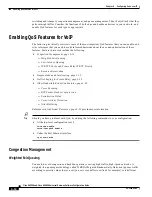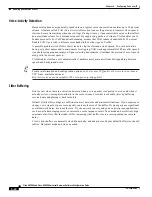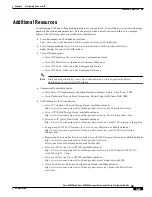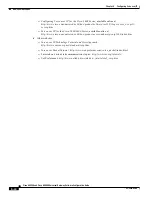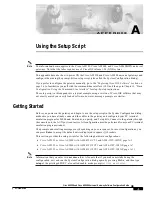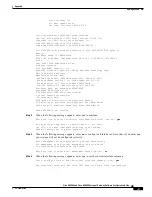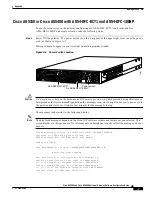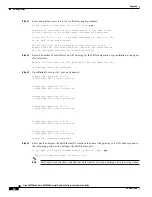
6-20
Cisco AS5350 and Cisco AS5400 Universal Gateway Software Configuration Guide
OL-3418-02 B0
Chapter 6
Configuring Voice over IP
Enabling QoS Features for VoIP
Other Bandwidth-Reduction Features
Voice Encoding
The Cisco AS5350 and Cisco AS5400 gateways offer the following codec (coders/decoder)
methodologies for encoding (digitizing and, optionally, compressing) voice:
•
G.711/PCM (pulse-code modulation): Digitizes, does not compress
•
G.729a/CS-ACELP (conjucate structure - algebraic code excited linear prediction): Digitizes and
compresses
•
G.723.1/MP-MLQ (multipulse multilevel quantization), 6.3 or 5.3 kbps: Digitizes and compresses
Choosing a coding methodology is a matter of balancing trade-offs among several factors, principal
among them those listed for various methodologies in
Table 6-8
.
Note
Tandem switching (also called dual encodings or dual compressions) can cause additional problems.
Digital calls routed to a tandem (toll) office are converted there to analog form for processing, and then
reconverted to digital form for further transmission. Converting and reconverting in this way more than
about twice distorts signals irreparably. If your calls are subject to significant toll-office processing,
choose PCM if you have sufficient bandwidth. It is also recommended that you employ a Cisco IOS
Multimedia Conference Manager (H.323 gatekeeper) or management application such as Cisco Voice
Manager to help manage these types of processes.
Other factors that might enter into your decision, or that you can use to tweak performance, include the
likelihood of multiple tandem encodings and how you handle packet fragmentation.
Tip
For more information and configuration options, see Voice over IP Quality of Service for Low-Speed
PPP Links, available online at
http://www.cisco.com/warp/public/788/voice-qos/voip-mlppp.html
Table 6-8
Trade-Offs Among Codec Methodologies
Methodology
Bit Rate (kbps)
1
1.
High bit rate is optimal for voice quality, because the original voice signal is better represented; low bit rate is optimal for
network performance, because packets are less apt to be delayed or dropped.
Frame Size (ms)
(low is optimal)
Processing
Required (mips)
(low is optimal)
Perceived Quality
(1=bad, 5=excellent)
(high is optimal)
2
2.
Perceived quality is measured in standardized mean-opinion-score (MOS) studies.
G.711 PCM
64 (very high)
0.125 (low)
0.34 (low)
4.1 (high)
G.729a CS-ACELP
8 (low)
10 (med)
10 (med)
3.7 (med)
G.723.1 MP-MLQ
6.3/5.3 (low)
30 (high)
16 (med-high)
3.9 (med)



